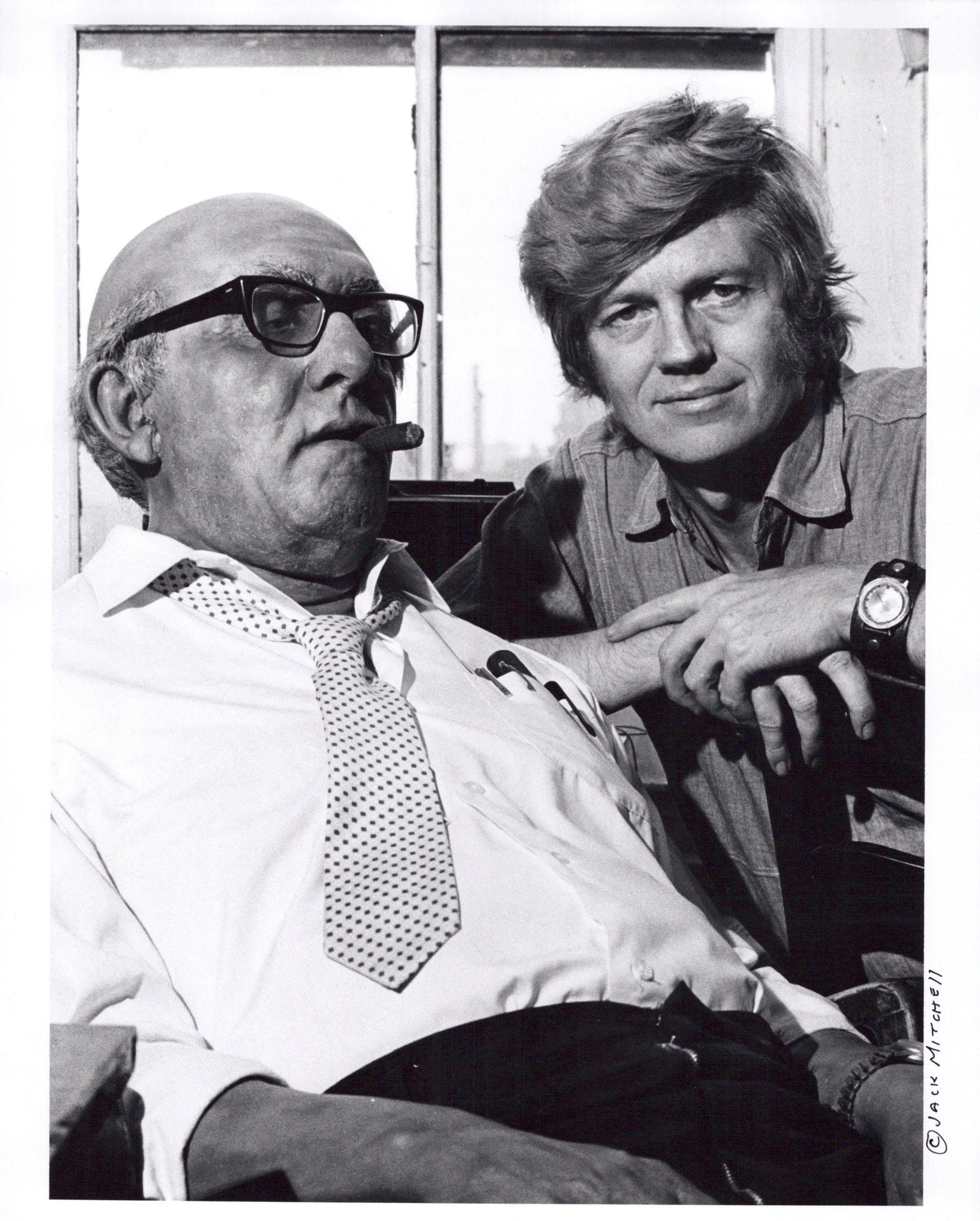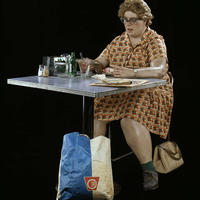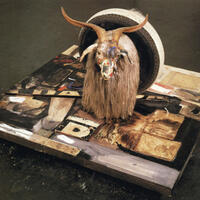More about Duane Hanson
Works by Duane Hanson

Sr. Editor
Makes crazy realistic sculptures of people. When he started out, his stuff showed the brutal side of human nature with works like Abortion, which shows the blood and gore of an illegal procedure, and Race Riot which depicts a group of white police officers attacking an African American man. With intense pieces like these and even one that showed the horrors of the Vietnam War, he definitely had his finger on the pulse of the politics of the 1960s.
I'm not sure what that says about the pulse of America in later years, but from the pudgy, dull folks Hanson started to create in the '70s, I'd venture to say it has been significantly slowed by trans fats.
Hanson once said, "I'm not duplicating life, I'm making a statement about human values." From hate crimes to fast food, it's pretty clear he doesn't think that highly of ours.

Contributor
Duane Hanson saw a new world of expression made possible through Pop art.
Pop art's ambition, in part, was to disrupt the hierarchy of "high" and "low" culture, making kitsch intellectual, boredom exciting, and pretentiousness cheap. Like Bob Dylan's Rolling Thunder Revue tour, a growing number of "serious artists" evoked the energy of the traveling circus, the carnival barker--of Times Square, Fisherman's Wharf, Ripley's Believe it or Not, the Guinness Book of World Records. Present in the work of Duane Hanson, Tracey Emin, Claes Oldenburg, Jeff Koons, and Damien Hirst is an attempt at a blurring of the "fourth wall" separating an art installation from its audience. This occurs by using representations of the everyday, banal, and profane object, in the cases of Emin and Oldenburg, as well as by using the gratuitously valuable object, in the cases of Koons and Hirst.
Hanson somehow manages to create an art space and time which is marked simultaneously by the everydayness of the subjects and the spectacular realism and high production value of his works. In this sense, Hanson's practice scrambles the binary of "high" and "low" art by introducing the banal illusion, the simulation of the unremarkable, often sad and disturbing, everyday scene. In a 1989 interview Hanson gave a political background to his approach:
"[Pop art] made me more aware of my immediate environment, of what was close to me. I decided this art on a pedestal is crazy, you know. I don’t want to do that. I want to do something that I have strong feelings about, about the society, about war, about the environment, about all these things...But Pop art opened my eyes to just the American environment and everything around me, and the people. What’s more interesting than the people?"
These comments recall Warhol's expressions of concern for poor people in the United States, as in his soup kitchen volunteer work, or "his" comment, ghostwritten by Pat Hackett, Brigid Berlin or another factory employee, that the United States would "be more beautiful if everybody had enough money to live." Here "Warhol," like Dylan and Hanson, uses a popular form to draw attention to a political issue.
Duane Hanson is an unusual artist, in that his work tends to elicit responses which usually fall outside of the bounds of art criticism. Hanson made highly realistic sculptures of people, placing them in locations where they can easily be mistaken for a real person. Viewers are confused because they are initially uncertain if they are looking at a human or a work of art. Hanson's sculpture The Jogger is particularly disturbing because it depicts a middle aged man sitting on the floor in pain; a typical audience instinctively gathers around him to see if he needs help.
Hanson's eerily correspondent sculptures make people ask, why does it make me feel uncomfortable? Does the uncanny valley, the gap between a pleasing but fantastic artwork and an artwork so realistic that is it shocking and weird, exist, or is it just an idea?
Sources
- Brenton, Harry, Marco Gillies, Daniel Ballin, and David Chatting. "The uncanny valley: does it exist?" Proceedings of conference of human computer interaction, workshop on human animated character interaction, 2005.
- Colacello, Bob. Holy Terror: Andy Warhol Close Up. New York: Vintage Books, 2014.
- Hanson, Duane. “Statement,” dated November 12, 1973, Duane Hanson Papers, 1969-2000. Archives of American Art, Smithsonian Institution, box no. 1, folder “New York Show 1974.”
- Huerta, Monica Ines. Encountering Mimetic Realism: Sculptures by Duane Hanson, Robert Gober, and Ron Mueck. Ph.D. dissertation, University of Michigan, 2010.
- Warhol, Andy. The Philosophy of Andy Warhol: From A to B and Back Again. New York: Harcourt Brace Jovanovich, 1988.
Featured Content
Here is what Wikipedia says about Duane Hanson
Duane Hanson (January 17, 1925 – January 6, 1996) was an American artist and sculptor born in Minnesota. He spent most of his career in South Florida. He was known for his life-sized realistic sculptures of people. He cast the works based on human models in various materials, including polyester resin, fiberglass, Bondo, and bronze. Hanson's works are in the permanent collections of The Whitney Museum of American Art, The San Francisco Museum of Modern Art, and The Smithsonian.
Check out the full Wikipedia article about Duane Hanson













